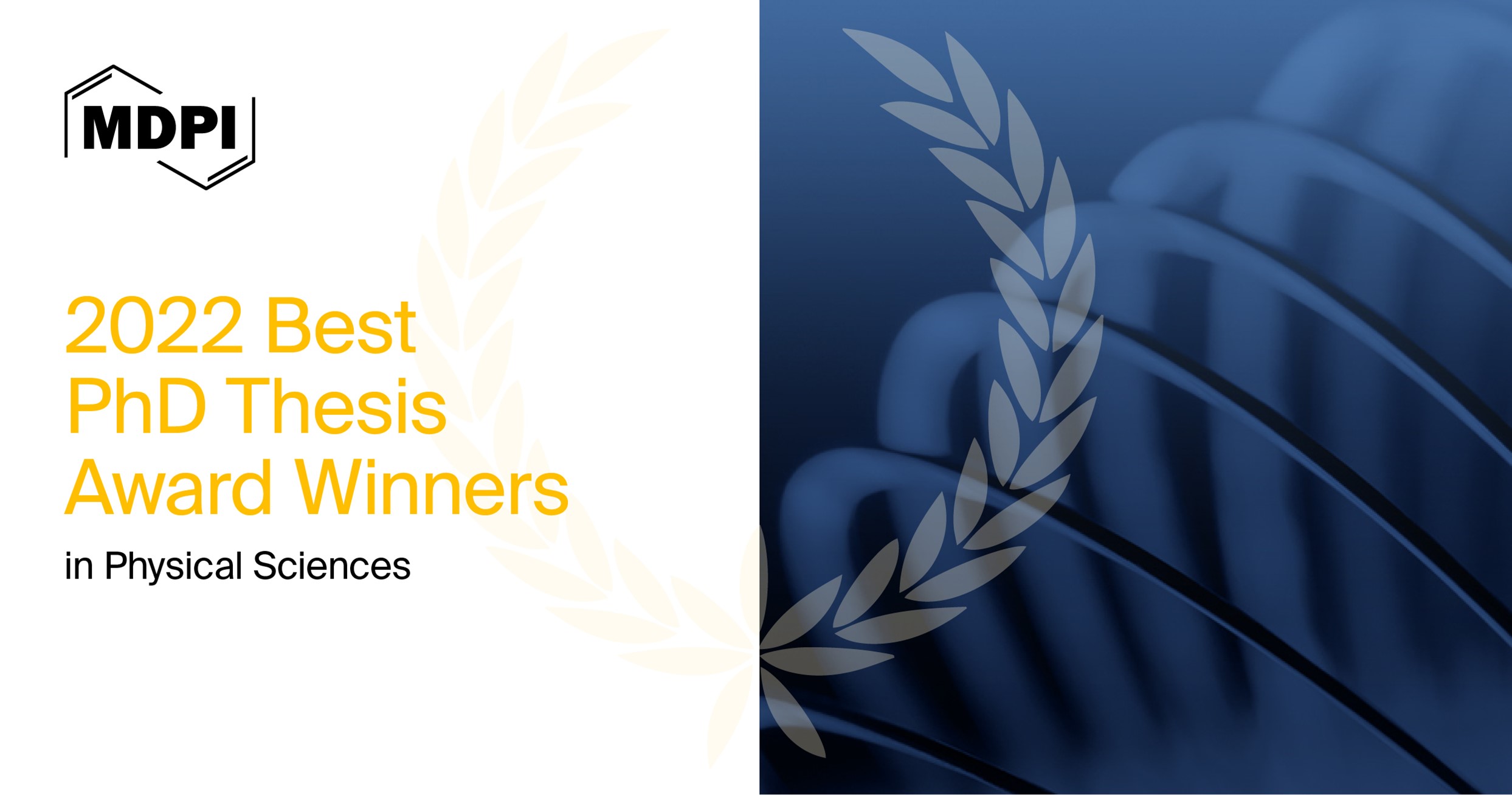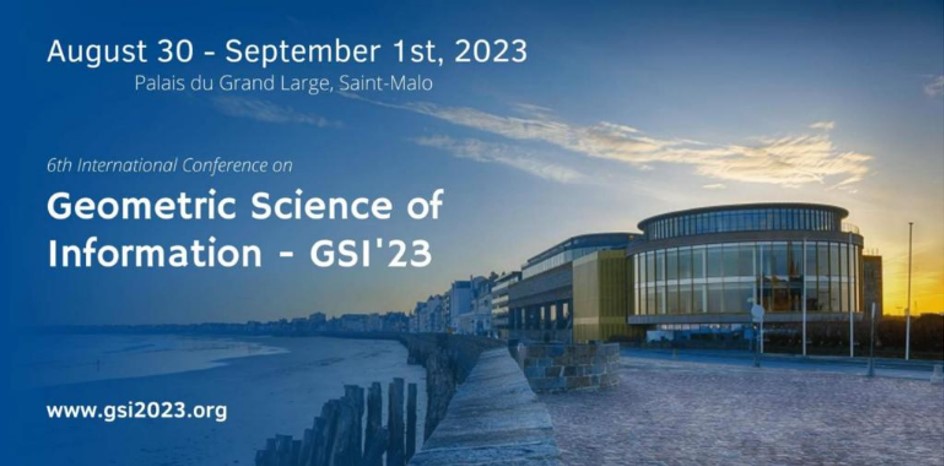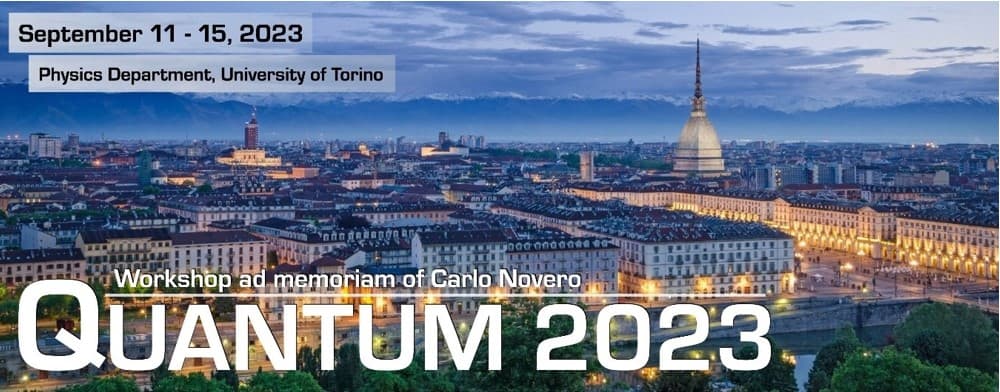-
 Basin Entropy and Shearless Barrier Breakup in Open Non-Twist Hamiltonian Systems
Basin Entropy and Shearless Barrier Breakup in Open Non-Twist Hamiltonian Systems -
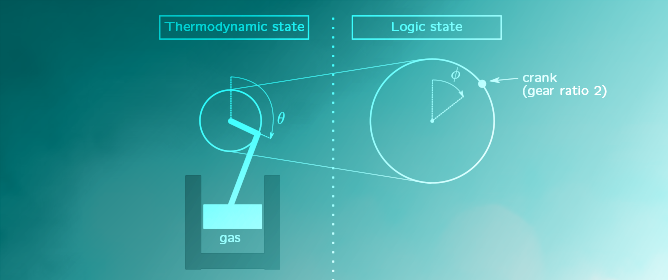 Thermodynamical versus Logical Irreversibility: A Concrete Objection to Landauer’s Principle
Thermodynamical versus Logical Irreversibility: A Concrete Objection to Landauer’s Principle -
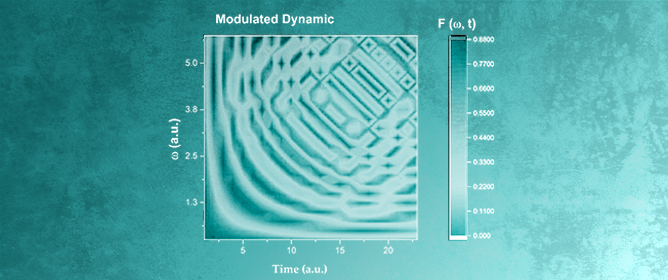 Towards Multifractality through an Ernst-Type Potential in Complex Systems Dynamics
Towards Multifractality through an Ernst-Type Potential in Complex Systems Dynamics -
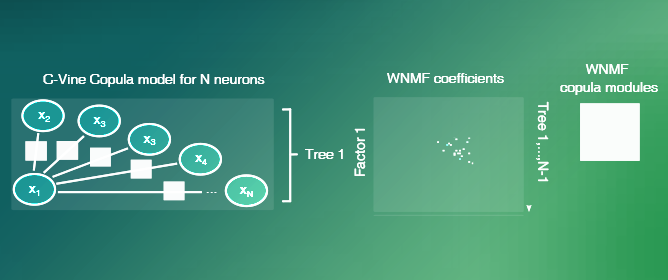 Discovering Low-Dimensional Descriptions of Multineuronal Dependencies
Discovering Low-Dimensional Descriptions of Multineuronal Dependencies -
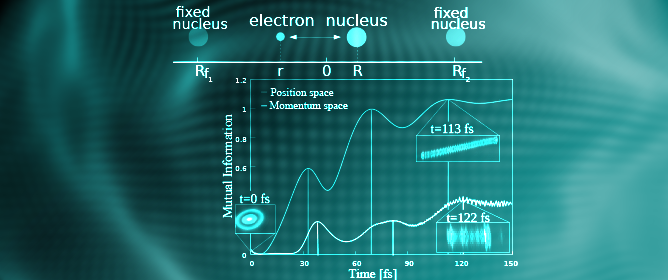 Differential Shannon Entropies Characterizing Electron–Nuclear Dynamics and Correlation: Momentum-Space Versus Coordinate-Space Wave Packet Motion
Differential Shannon Entropies Characterizing Electron–Nuclear Dynamics and Correlation: Momentum-Space Versus Coordinate-Space Wave Packet Motion
Journal Description
Entropy
Entropy
is an international and interdisciplinary peer-reviewed open access journal of entropy and information studies, published monthly online by MDPI. The International Society for the Study of Information (IS4SI) and Spanish Society of Biomedical Engineering (SEIB) are affiliated with Entropy and their members receive a discount on the article processing charge.
- Open Access— free for readers, with article processing charges (APC) paid by authors or their institutions.
- High Visibility: indexed within Scopus, SCIE (Web of Science), MathSciNet, Inspec, PubMed, PMC, Astrophysics Data System, and other databases.
- Journal Rank: JCR - Q2 (Physics, Multidisciplinary) / CiteScore - Q1 (Mathematical Physics)
- Rapid Publication: manuscripts are peer-reviewed and a first decision is provided to authors approximately 20.4 days after submission; acceptance to publication is undertaken in 2.9 days (median values for papers published in this journal in the first half of 2023).
- Recognition of Reviewers: reviewers who provide timely, thorough peer-review reports receive vouchers entitling them to a discount on the APC of their next publication in any MDPI journal, in appreciation of the work done.
- Testimonials: See what our editors and authors say about Entropy.
- Companion journals for Entropy include: Foundations, Thermo and MAKE.
Impact Factor:
2.7 (2022);
5-Year Impact Factor:
2.6 (2022)
Latest Articles
Quantum-Walk-Inspired Dynamic Adiabatic Local Search
Entropy 2023, 25(9), 1287; https://doi.org/10.3390/e25091287 (registering DOI) - 31 Aug 2023
Abstract
We investigate the irreconcilability issue that arises when translating the search algorithm from the Continuous Time Quantum Walk (CTQW) framework to the Adiabatic Quantum Computing (AQC) framework. For the AQC formulation to evolve along the same path as the CTQW, it requires a
[...] Read more.
We investigate the irreconcilability issue that arises when translating the search algorithm from the Continuous Time Quantum Walk (CTQW) framework to the Adiabatic Quantum Computing (AQC) framework. For the AQC formulation to evolve along the same path as the CTQW, it requires a constant energy gap in the Hamiltonian throughout the AQC schedule. To resolve the constant gap issue, we modify the CTQW-inspired AQC catalyst Hamiltonian from an XZ operator to a Z oracle operator. Through simulation, we demonstrate that the total running time for the proposed approach for AQC with the modified catalyst Hamiltonian remains optimal as CTQW. Inspired by this solution, we further investigate adaptive scheduling for the catalyst Hamiltonian and its coefficient function in the adiabatic path of Grover-inspired AQC to improve the adiabatic local search.
Full article
(This article belongs to the Special Issue Advances in Quantum Computing)
Open AccessArticle
Effective Excess Noise Suppression in Continuous-Variable Quantum Key Distribution through Carrier Frequency Switching
Entropy 2023, 25(9), 1286; https://doi.org/10.3390/e25091286 (registering DOI) - 31 Aug 2023
Abstract
Continuous-variable quantum key distribution (CV-QKD) is a promising protocol that can be easily integrated with classical optical communication systems. However, in the case of quantum-classical co-transmissions, such as dense wavelength division multiplexing with classical channels and time division multiplexing with large-power classical signal,
[...] Read more.
Continuous-variable quantum key distribution (CV-QKD) is a promising protocol that can be easily integrated with classical optical communication systems. However, in the case of quantum-classical co-transmissions, such as dense wavelength division multiplexing with classical channels and time division multiplexing with large-power classical signal, a quantum signal is more susceptible to crosstalk caused by a classical signal, leading to signal distortion and key distribution performance reduction. To address this issue, we propose a noise-suppression scheme based on carrier frequency switching (CFS) that can effectively mitigate the influence of large-power random noise on the weak coherent state. In this noise-suppression scheme, a minimum-value window of the channel’s noise power spectrum is searched for and the transmission signal frequency spectrum shifts to the corresponding frequency to avoid large-power channel noise. A digital filter is also utilized to filter out most of the channel noise. Simulation results show that compared to the traditional fixed carrier frequency scheme, the proposed noise-suppression scheme can reduce the excess noise to
(This article belongs to the Special Issue Quantum and Classical Physical Cryptography)
►▼
Show Figures

Figure 1
Open AccessArticle
Spectrum Sensing Based on Hybrid Spectrum Handoff in Cognitive Radio Networks
by
, , and
Entropy 2023, 25(9), 1285; https://doi.org/10.3390/e25091285 (registering DOI) - 31 Aug 2023
Abstract
►▼
Show Figures
The rapid advancement of wireless communication combined with insufficient spectrum exploitation opens the door for the expansion of novel wireless services. Cognitive radio network (CRN) technology makes it possible to periodically access the open spectrum bands, which in turn improves the effectiveness of
[...] Read more.
The rapid advancement of wireless communication combined with insufficient spectrum exploitation opens the door for the expansion of novel wireless services. Cognitive radio network (CRN) technology makes it possible to periodically access the open spectrum bands, which in turn improves the effectiveness of CRNs. Spectrum sensing (SS), which allows unauthorized users to locate open spectrum bands, plays a fundamental part in CRNs. A precise approximation of the power spectrum is essential to accomplish this. On the assumption that each SU’s parameter vector contains some globally and partially shared parameters, spectrum sensing is viewed as a parameter estimation issue. Distributed and cooperative spectrum sensing (CSS) is a key component of this concept. This work introduces a new component-specific cooperative spectrum sensing model (CSCSSM) in CRNs considering the amplitude and phase components of the input signal including Component Specific Adaptive Estimation (CSAE) for mean squared deviation (MSD) formulation. The proposed concept ensures minimum information loss compared to the traditional methods that consider error calculation among the direct signal vectors. The experimental results and performance analysis prove the robustness and efficiency of the proposed work over the traditional methods.
Full article
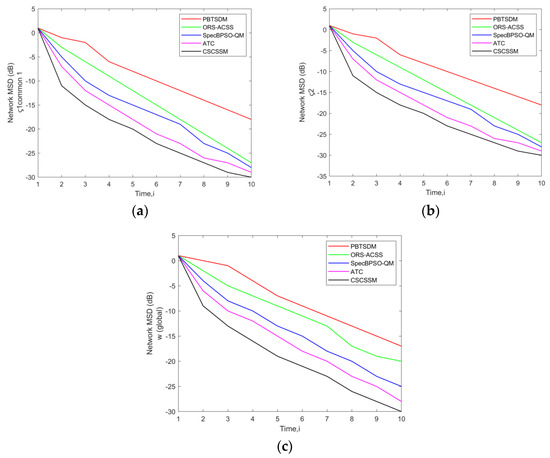
Figure 1
Open AccessArticle
Defining the Scale to Build Complex Networks with a 40-Year Norwegian Intraplate Seismicity Dataset
Entropy 2023, 25(9), 1284; https://doi.org/10.3390/e25091284 - 31 Aug 2023
Abstract
We present a new complex network-based study focused on intraplate earthquakes recorded in southern Norway during the period 1980–2020. One of the most recognized limitations of spatial complex network procedures and analyses concerns the definition of adequate cell size, which is the focus
[...] Read more.
We present a new complex network-based study focused on intraplate earthquakes recorded in southern Norway during the period 1980–2020. One of the most recognized limitations of spatial complex network procedures and analyses concerns the definition of adequate cell size, which is the focus of this approach. In the present study, we analyze the influence of observational errors of hypocentral and epicentral locations of seismic events in the construction of a complex network, looking for the best cell size to build it and to develop a basis for interpreting the results in terms of the structure of the complex network in this seismic region. We focus the analysis on the degree distribution of the complex networks. We observed a strong result of the cell size for the slope of the degree distribution of the nodes, called the critical exponent
(This article belongs to the Special Issue Complexity and Statistical Physics Approaches to Earthquakes)
►▼
Show Figures
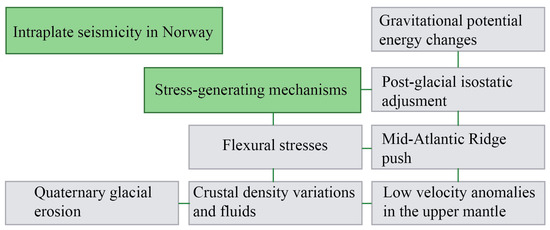
Figure 1
Open AccessArticle
Systems of Precision: Coherent Probabilities on Pre-Dynkin Systems and Coherent Previsions on Linear Subspaces
by
and
Entropy 2023, 25(9), 1283; https://doi.org/10.3390/e25091283 (registering DOI) - 31 Aug 2023
Abstract
In the literature on imprecise probability, little attention is paid to the fact that imprecise probabilities are precise on a set of events. We call these sets systems of precision. We show that, under mild assumptions, the system of precision of a
[...] Read more.
In the literature on imprecise probability, little attention is paid to the fact that imprecise probabilities are precise on a set of events. We call these sets systems of precision. We show that, under mild assumptions, the system of precision of a lower and upper probability form a so-called (pre-)Dynkin system. Interestingly, there are several settings, ranging from machine learning on partial data over frequential probability theory to quantum probability theory and decision making under uncertainty, in which, a priori, the probabilities are only desired to be precise on a specific underlying set system. Here, (pre-)Dynkin systems have been adopted as systems of precision, too. We show that, under extendability conditions, those pre-Dynkin systems equipped with probabilities can be embedded into algebras of sets. Surprisingly, the extendability conditions elaborated in a strand of work in quantum probability are equivalent to coherence from the imprecise probability literature. On this basis, we spell out a lattice duality which relates systems of precision to credal sets of probabilities. We conclude the presentation with a generalization of the framework to expectation-type counterparts of imprecise probabilities. The analogue of pre-Dynkin systems turns out to be (sets of) linear subspaces in the space of bounded, real-valued functions. We introduce partial expectations, natural generalizations of probabilities defined on pre-Dynkin systems. Again, coherence and extendability are equivalent. A related but more general lattice duality preserves the relation between systems of precision and credal sets of probabilities.
Full article
(This article belongs to the Special Issue Quantum Probability and Randomness IV)
►▼
Show Figures
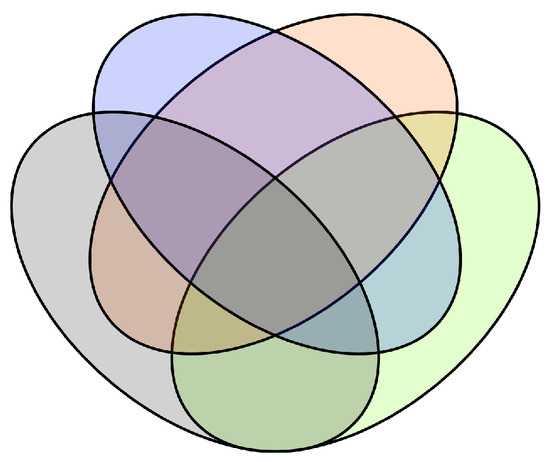
Figure 1
Open AccessArticle
Nighttime Image Stitching Method Based on Image Decomposition Enhancement
Entropy 2023, 25(9), 1282; https://doi.org/10.3390/e25091282 (registering DOI) - 31 Aug 2023
Abstract
Image stitching technology realizes alignment and fusion of a series of images with common pixel areas taken from different viewpoints of the same scene to produce a wide field of view panoramic image with natural structure. The night environment is one of the
[...] Read more.
Image stitching technology realizes alignment and fusion of a series of images with common pixel areas taken from different viewpoints of the same scene to produce a wide field of view panoramic image with natural structure. The night environment is one of the important scenes of human life, and the night image stitching technology has more urgent practical significance in the fields of security monitoring and intelligent driving at night. Due to the influence of artificial light sources at night, the brightness of the image is unevenly distributed and there are a large number of dark light areas, but often these dark light areas have rich structural information. The structural features hidden in the darkness are difficult to extract, resulting in ghosting and misalignment when stitching, which makes it difficult to meet the practical application requirements. Therefore, a nighttime image stitching method based on image decomposition enhancement is proposed to address the problem of insufficient line feature extraction in the stitching process of nighttime images. The proposed algorithm performs luminance enhancement on the structural layer, smoothes the nighttime image noise using a denoising algorithm on the texture layer, and finally complements the texture of the fused image by an edge enhancement algorithm. The experimental results show that the proposed algorithm improves the image quality in terms of information entropy, contrast, and noise suppression compared with other algorithms. Moreover, the proposed algorithm extracts the most line features from the processed nighttime images, which is more helpful for the stitching of nighttime images.
Full article
(This article belongs to the Topic Color Image Processing: Models and Methods (CIP: MM))
►▼
Show Figures
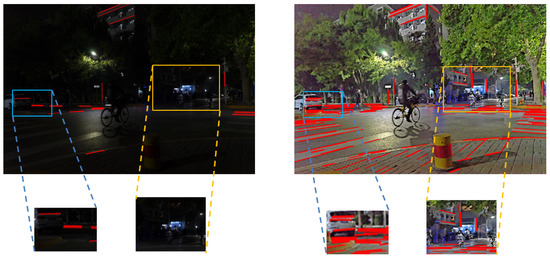
Figure 1
Open AccessArticle
Origins of Genetic Coding: Self-Guided Molecular Self-Organisation
Entropy 2023, 25(9), 1281; https://doi.org/10.3390/e25091281 (registering DOI) - 31 Aug 2023
Abstract
The origin of genetic coding is characterised as an event of cosmic significance in which quantum mechanical causation was transcended by constructive computation. Computational causation entered the physico-chemical processes of the pre-biotic world by the incidental satisfaction of a condition of reflexivity between
[...] Read more.
The origin of genetic coding is characterised as an event of cosmic significance in which quantum mechanical causation was transcended by constructive computation. Computational causation entered the physico-chemical processes of the pre-biotic world by the incidental satisfaction of a condition of reflexivity between polymer sequence information and system elements able to facilitate their own production through translation of that information. This event, which has previously been modelled in the dynamics of Gene–Replication–Translation systems, is properly described as a process of self-guided self-organisation. The spontaneous emergence of a primordial genetic code between two-letter alphabets of nucleotide triplets and amino acids is easily possible, starting with random peptide synthesis that is RNA-sequence-dependent. The evident self-organising mechanism is the simultaneous quasi-species bifurcation of the populations of information-carrying genes and enzymes with aminoacyl-tRNA synthetase-like activities. This mechanism allowed the code to evolve very rapidly to the ~20 amino acid limit apparent for the reflexive differentiation of amino acid properties using protein catalysts. The self-organisation of semantics in this domain of physical chemistry conferred on emergent molecular biology exquisite computational control over the nanoscopic events needed for its self-construction.
Full article
(This article belongs to the Special Issue Recent Advances in Guided Self-Organization)
►▼
Show Figures

Figure 1
Open AccessArticle
HE-YOLOv5s: Efficient Road Defect Detection Network
Entropy 2023, 25(9), 1280; https://doi.org/10.3390/e25091280 (registering DOI) - 31 Aug 2023
Abstract
In recent years, the number of traffic accidents caused by road defects has increased dramatically all over the world, and the repair and prevention of road defects is an urgent task. Researchers in different countries have proposed many models to deal with this
[...] Read more.
In recent years, the number of traffic accidents caused by road defects has increased dramatically all over the world, and the repair and prevention of road defects is an urgent task. Researchers in different countries have proposed many models to deal with this task, but most of them are either highly accurate and slow in detection, or the accuracy is low and the detection speed is high. The accuracy and speed have achieved good results, but the generalization of the model to other datasets is poor. Given this, this paper takes YOLOv5s as a benchmark model and proposes an optimization model to solve the problem of road defect detection. First, we significantly reduce the parameters of the model by pruning the model and removing unimportant modules, propose an improved Spatial Pyramid Pooling-Fast (SPPF) module to improve the feature signature fusion ability, and finally add an attention module to focus on the key information. The activation function, sampling method, and other strategies were also replaced in this study. The test results on the Global Road Damage Detection Challenge (GRDDC) dataset show that the FPS of our proposed model is not only faster than the baseline model but also improves the MAP by 2.08%, and the size of this model is also reduced by 6.07 M.
Full article
(This article belongs to the Special Issue Application of Information Theory to Physical Modeling and State Awareness in Complex Systems)
►▼
Show Figures
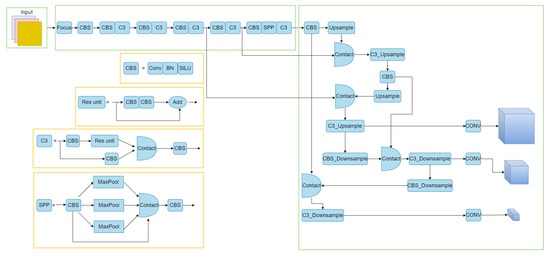
Figure 1
Open AccessEditorial
Quantum Chaos—Dedicated to Professor Giulio Casati on the Occasion of His 80th Birthday
by
Entropy 2023, 25(9), 1279; https://doi.org/10.3390/e25091279 (registering DOI) - 31 Aug 2023
Abstract
Quantum chaos is the study of phenomena in the quantum domain which correspond to classical chaos [...]
Full article
(This article belongs to the Special Issue Quantum Chaos—Dedicated to Professor Giulio Casati on the Occasion of His 80th Birthday)
Open AccessArticle
Investigation of Feature Engineering Methods for Domain-Knowledge-Assisted Bearing Fault Diagnosis
Entropy 2023, 25(9), 1278; https://doi.org/10.3390/e25091278 (registering DOI) - 30 Aug 2023
Abstract
The engineering challenge of rolling bearing condition monitoring has led to a large number of method developments over the past few years. Most commonly, vibration measurement data are used for fault diagnosis using machine learning algorithms. In current research, purely data-driven deep learning
[...] Read more.
The engineering challenge of rolling bearing condition monitoring has led to a large number of method developments over the past few years. Most commonly, vibration measurement data are used for fault diagnosis using machine learning algorithms. In current research, purely data-driven deep learning methods are becoming increasingly popular, aiming for accurate predictions of bearing faults without requiring bearing-specific domain knowledge. Opposing this trend in popularity, the present paper takes a more traditional approach, incorporating domain knowledge by evaluating a variety of feature engineering methods in combination with a random forest classifier. For a comprehensive feature engineering study, a total of 42 mathematical feature formulas are combined with the preprocessing methods of envelope analysis, empirical mode decomposition, wavelet transforms, and frequency band separations. While each single processing method and feature formula is known from the literature, the presented paper contributes to the body of knowledge by investigating novel series connections of processing methods and feature formulas. Using the CWRU bearing fault data for performance evaluation, feature calculation based on the processing method of frequency band separation leads to particularly high prediction accuracies, while at the same time being very efficient in terms of low computational effort. Additionally, in comparison with deep learning approaches, the proposed feature engineering method provides excellent accuracies and enables explainability.
Full article
(This article belongs to the Special Issue New Trends in Fault Diagnosis and Prognosis for Engineering Applications: From Signal Processing to Machine Learning and Deep Learning)
►▼
Show Figures
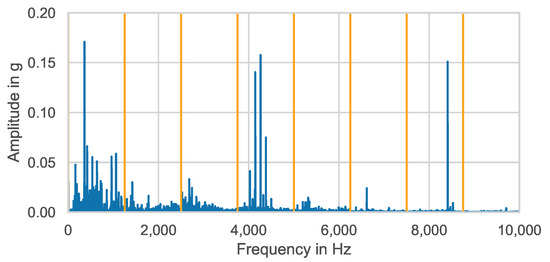
Figure 1
Open AccessArticle
Multi-UAV Cooperative Trajectory Planning Based on the Modified Cheetah Optimization Algorithm
Entropy 2023, 25(9), 1277; https://doi.org/10.3390/e25091277 - 30 Aug 2023
Abstract
The capacity for autonomous functionality serves as the fundamental ability and driving force for the cross-generational upgrading of unmanned aerial vehicles (UAVs). With the disruptive transformation of artificial intelligence technology, autonomous trajectory planning based on intelligent algorithms has emerged as a key technique
[...] Read more.
The capacity for autonomous functionality serves as the fundamental ability and driving force for the cross-generational upgrading of unmanned aerial vehicles (UAVs). With the disruptive transformation of artificial intelligence technology, autonomous trajectory planning based on intelligent algorithms has emerged as a key technique for enhancing UAVs’ capacity for autonomous behavior, thus holding significant research value. To address the challenges of UAV trajectory planning in complex 3D environments, this paper proposes a multi-UAV cooperative trajectory-planning method based on a Modified Cheetah Optimization (MCO) algorithm. Firstly, a spatiotemporal cooperative trajectory planning model is established, incorporating UAV-cooperative constraints and performance constraints. Evaluation criteria, including fuel consumption, altitude, and threat distribution field cost functions, are introduced. Then, based on its parent Cheetah Optimization (CO) algorithm, the MCO algorithm incorporates a logistic chaotic mapping strategy and an adaptive search agent strategy, thereby improving the home-returning mechanism. Finally, extensive simulation experiments are conducted using a considerably large test dataset containing functions with the following four characteristics: unimodal, multimodal, separable, and inseparable. Meanwhile, a strategy for dimensionality reduction searching is employed to solve the problem of autonomous trajectory planning in real-world scenarios. The results of a conducted simulation demonstrate that the MCO algorithm outperforms several other related algorithms, showcasing smaller trajectory costs, a faster convergence speed, and stabler performance. The proposed algorithm exhibits a certain degree of correctness, effectiveness, and advancement in solving the problem of multi-UAV cooperative trajectory planning.
Full article
(This article belongs to the Section Multidisciplinary Applications)
►▼
Show Figures
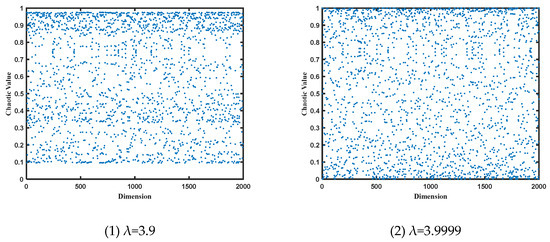
Figure 1
Open AccessArticle
Generalized Bell Scenarios: Disturbing Consequences on Local-Hidden-Variable Models
by
, , , , and
Entropy 2023, 25(9), 1276; https://doi.org/10.3390/e25091276 - 30 Aug 2023
Abstract
Bell nonlocality and Kochen–Specker contextuality are among the main topics in the foundations of quantum theory. Both of them are related to stronger-than-classical correlations, with the former usually referring to spatially separated systems, while the latter considers a single system. In recent works,
[...] Read more.
Bell nonlocality and Kochen–Specker contextuality are among the main topics in the foundations of quantum theory. Both of them are related to stronger-than-classical correlations, with the former usually referring to spatially separated systems, while the latter considers a single system. In recent works, a unified framework for these phenomena was presented. This article reviews, expands, and obtains new results regarding this framework. Contextual and disturbing features inside the local models are explored, which allows for the definition of different local sets with a non-trivial relation among them. The relations between the set of quantum correlations and these local sets are also considered, and post-quantum local behaviours are found. Moreover, examples of correlations that are both local and non-contextual but such that these two classical features cannot be expressed by the same hidden variable model are shown. Extensions of the Fine–Abramsky–Brandenburger theorem are also discussed.
Full article
(This article belongs to the Special Issue Quantum Correlations, Contextuality, and Quantum Nonlocality)
►▼
Show Figures
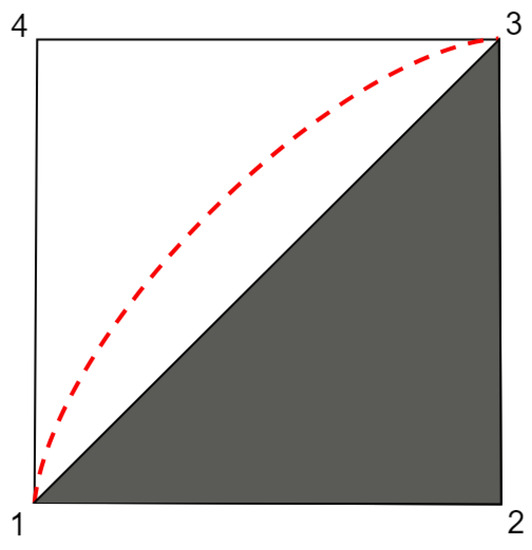
Figure 1
Open AccessReview
Mental Gravity: Depression as Spacetime Curvature of the Self, Mind, and Brain
by
Entropy 2023, 25(9), 1275; https://doi.org/10.3390/e25091275 - 30 Aug 2023
Abstract
The principle of mental gravity contends that the mind uses physical gravity as a mental model or simulacrum to express the relation between the inner self and the outer world in terms of “UP”-ness and “DOWN”-ness. The simulation of increased gravity characterises a
[...] Read more.
The principle of mental gravity contends that the mind uses physical gravity as a mental model or simulacrum to express the relation between the inner self and the outer world in terms of “UP”-ness and “DOWN”-ness. The simulation of increased gravity characterises a continuum of mental gravity which states includes depression as the paradigmatic example of being down, low, heavy, and slow. The physics of gravity can also be used to model spacetime curvature in depression, particularly gravitational time dilation as a property of MG analogous to subjective time dilation (i.e., the slowing of temporal flow in conscious experience). The principle has profound implications for the Temporo-spatial Theory of Consciousness (TTC) with regard to temporo-spatial alignment that establishes a “world-brain relation” that is centred on embodiment and the socialisation of conscious states. The principle of mental gravity provides the TTC with a way to incorporate the structure of the world into the structure of the brain, conscious experience, and thought. In concert with other theories of cognitive and neurobiological spacetime, the TTC can also work towards the “common currency” approach that also potentially connects the TTC to predictive processing frameworks such as free energy, neuronal gauge theories, and active inference accounts of depression. It gives the up/down dimension of space, as defined by the gravitational field, a unique status that is connected to both our embodied interaction with the physical world, and also the inverse, reflective, emotional but still embodied experience of ourselves.
Full article
(This article belongs to the Special Issue Temporo-Spatial Theory of Consciousness (TTC))
►▼
Show Figures
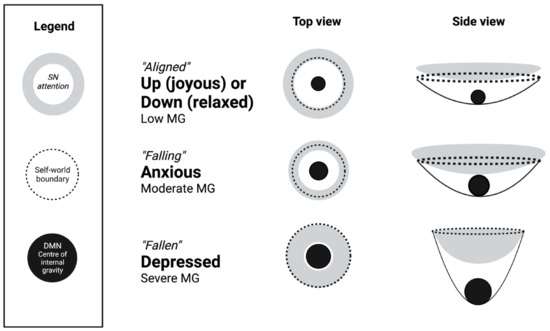
Figure 1
Open AccessArticle
A Semi-Supervised Stacked Autoencoder Using the Pseudo Label for Classification Tasks
Entropy 2023, 25(9), 1274; https://doi.org/10.3390/e25091274 - 30 Aug 2023
Abstract
The efficiency and cognitive limitations of manual sample labeling result in a large number of unlabeled training samples in practical applications. Making full use of both labeled and unlabeled samples is the key to solving the semi-supervised problem. However, as a supervised algorithm,
[...] Read more.
The efficiency and cognitive limitations of manual sample labeling result in a large number of unlabeled training samples in practical applications. Making full use of both labeled and unlabeled samples is the key to solving the semi-supervised problem. However, as a supervised algorithm, the stacked autoencoder (SAE) only considers labeled samples and is difficult to apply to semi-supervised problems. Thus, by introducing the pseudo-labeling method into the SAE, a novel pseudo label-based semi-supervised stacked autoencoder (PL-SSAE) is proposed to address the semi-supervised classification tasks. The PL-SSAE first utilizes the unsupervised pre-training on all samples by the autoencoder (AE) to initialize the network parameters. Then, by the iterative fine-tuning of the network parameters based on the labeled samples, the unlabeled samples are identified, and their pseudo labels are generated. Finally, the pseudo-labeled samples are used to construct the regularization term and fine-tune the network parameters to complete the training of the PL-SSAE. Different from the traditional SAE, the PL-SSAE requires all samples in pre-training and the unlabeled samples with pseudo labels in fine-tuning to fully exploit the feature and category information of the unlabeled samples. Empirical evaluations on various benchmark datasets show that the semi-supervised performance of the PL-SSAE is more competitive than that of the SAE, sparse stacked autoencoder (SSAE), semi-supervised stacked autoencoder (Semi-SAE) and semi-supervised stacked autoencoder (Semi-SSAE).
Full article
(This article belongs to the Section Information Theory, Probability and Statistics)
►▼
Show Figures
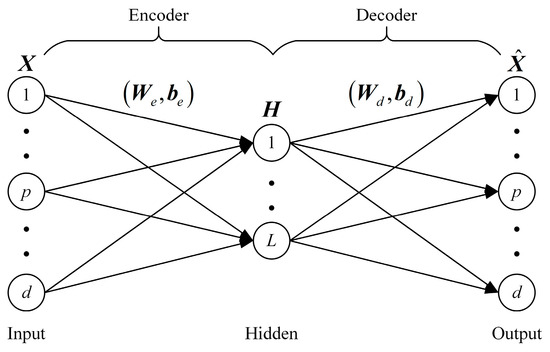
Figure 1
Open AccessArticle
Corn Harvester Bearing Fault Diagnosis Based on ABC-VMD and Optimized EfficientNet
Entropy 2023, 25(9), 1273; https://doi.org/10.3390/e25091273 - 29 Aug 2023
Abstract
The extraction of the optimal mode of the bearing signal in the drive system of a corn harvester is a challenging task. In addition, the accuracy and robustness of the fault diagnosis model are low. Therefore, this paper proposes a fault diagnosis method
[...] Read more.
The extraction of the optimal mode of the bearing signal in the drive system of a corn harvester is a challenging task. In addition, the accuracy and robustness of the fault diagnosis model are low. Therefore, this paper proposes a fault diagnosis method that uses the optimal mode component as the input feature. The vibration signal is first decomposed by variational mode decomposition (VMD) based on the optimal parameters searched by the artificial bee colony (ABC). Moreover, the key components are screened using an evaluation function that is a fusion of the arrangement entropy, the signal-to-noise ratio, and the power spectral density weighting. The Stockwell transform is then used to convert the filtered modal components into time–frequency images. Finally, the MBConv quantity and activation function of the EfficientNet network are optimized, and the time–frequency pictures are imported into the optimized network model for fault diagnosis. The comparative experiments show that the proposed method accurately extracts the optimal modal component and has a fault classification accuracy greater than 98%.
Full article
(This article belongs to the Special Issue Signal Processing for Fault Detection and Diagnosis in Electric Machines and Energy Conversion Systems)
►▼
Show Figures
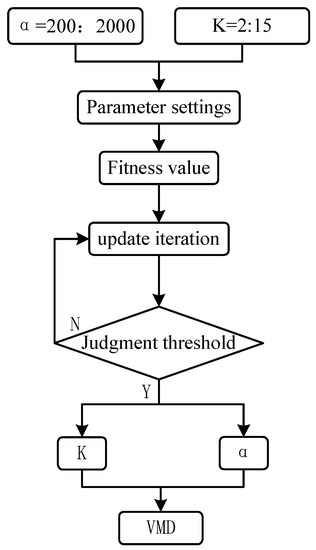
Figure 1
Open AccessArticle
Graph Regression Model for Spatial and Temporal Environmental Data—Case of Carbon Dioxide Emissions in the United States
Entropy 2023, 25(9), 1272; https://doi.org/10.3390/e25091272 - 29 Aug 2023
Abstract
We develop a new model for spatio-temporal data. More specifically, a graph penalty function is incorporated in the cost function in order to estimate the unknown parameters of a spatio-temporal mixed-effect model based on a generalized linear model. This model allows for more
[...] Read more.
We develop a new model for spatio-temporal data. More specifically, a graph penalty function is incorporated in the cost function in order to estimate the unknown parameters of a spatio-temporal mixed-effect model based on a generalized linear model. This model allows for more flexible and general regression relationships than classical linear ones through the use of generalized linear models (GLMs) and also captures the inherent structural dependencies or relationships of the data through this regularization based on the graph Laplacian. We use a publicly available dataset from the National Centers for Environmental Information (NCEI) in the United States of America and perform statistical inferences of future CO
(This article belongs to the Special Issue Spatial–Temporal Data Analysis and Its Applications)
►▼
Show Figures
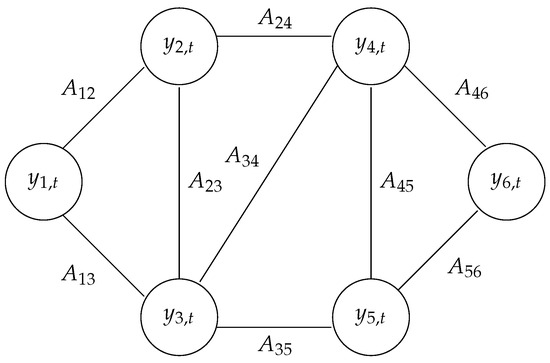
Figure 1
Open AccessArticle
A Quantum Genetic Algorithm for Building a Semantic Textual Similarity Estimation Framework for Plagiarism Detection Applications
Entropy 2023, 25(9), 1271; https://doi.org/10.3390/e25091271 - 29 Aug 2023
Abstract
The majority of the recent research on text similarity has been focused on machine learning strategies to combat the problem in the educational environment. When the originality of an idea is copied, it increases the difficulty of using a plagiarism detection system in
[...] Read more.
The majority of the recent research on text similarity has been focused on machine learning strategies to combat the problem in the educational environment. When the originality of an idea is copied, it increases the difficulty of using a plagiarism detection system in practice, and the system fails. In cases like active-to-passive conversion, phrase structure changes, synonym substitution, and sentence reordering, the present approaches may not be adequate for plagiarism detection. In this article, semantic extraction and the quantum genetic algorithm (QGA) are integrated in a unified framework to identify idea plagiarism with the aim of enhancing the performance of existing methods in terms of detection accuracy and computational time. Semantic similarity measures, which use the WordNet database to extract semantic information, are used to capture a document’s idea. In addition, the QGA is adapted to identify the interconnected, cohesive sentences that effectively convey the source document’s main idea. QGAs are formulated using the quantum computing paradigm based on qubits and the superposition of states. By using the qubit chromosome as a representation rather than the more traditional binary, numeric, or symbolic representations, the QGA is able to express a linear superposition of solutions with the aim of increasing gene diversity. Due to its fast convergence and strong global search capacity, the QGA is well suited for a parallel structure. The proposed model has been assessed using a PAN 13-14 dataset, and the result indicates the model’s ability to achieve significant detection improvement over some of the compared models. The recommended PD model achieves an approximately 20%, 15%, and 10% increase for TPR, PPV, and F-Score compared to GA and hierarchical GA (HGA)-based PD methods, respectively. Furthermore, the accuracy rate rises by approximately 10–15% for each increase in the number of samples in the dataset.
Full article
(This article belongs to the Special Issue Advances in Quantum Computing)
►▼
Show Figures
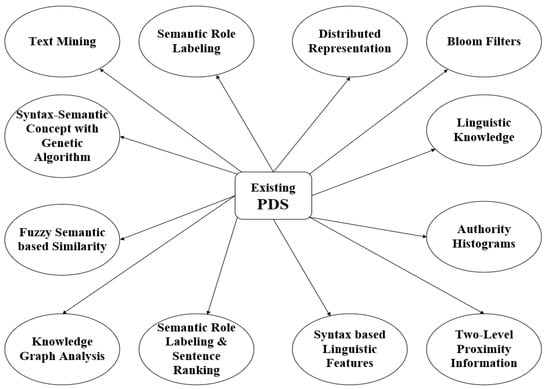
Figure 1
Open AccessFeature PaperArticle
Electromagnetic Conversion into Kinetic and Thermal Energies
Entropy 2023, 25(9), 1270; https://doi.org/10.3390/e25091270 - 29 Aug 2023
Abstract
The conversion of electromagnetic energy into magnetohydrodynamic energy occurs when the electric conductivity changes from negligible to finite values. This process is relevant during the epoch of reheating in the early universe at the end of inflation and before the emergence of the
[...] Read more.
The conversion of electromagnetic energy into magnetohydrodynamic energy occurs when the electric conductivity changes from negligible to finite values. This process is relevant during the epoch of reheating in the early universe at the end of inflation and before the emergence of the radiation-dominated era. We find that the conversion into kinetic and thermal energies is primarily the result of electric energy dissipation, while magnetic energy only plays a secondary role in this process. This means that since electric energy dominates over magnetic energy during inflation and reheating, significant amounts of electric energy can be converted into magnetohydrodynamic energy when conductivity emerges before the relevant length scales become stable.
Full article
(This article belongs to the Special Issue Energy Transfer and Dissipation in Plasma Turbulence)
►▼
Show Figures
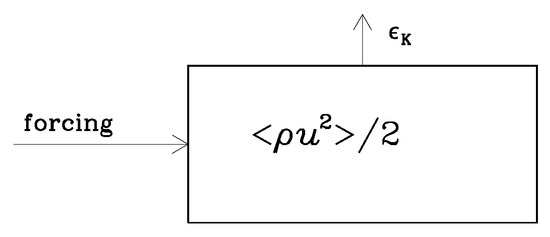
Figure 1
Open AccessArticle
A Semi-Quantum Private Comparison Base on W-States
Entropy 2023, 25(9), 1269; https://doi.org/10.3390/e25091269 - 29 Aug 2023
Abstract
Privacy comparison is an important research topic in secure multi-party computing, widely used in e-commerce, secret ballots, and other fields. However, the development of quantum computing power poses a growing potential security threat to secure multi-party algorithms based on mathematically tricky problems, and
[...] Read more.
Privacy comparison is an important research topic in secure multi-party computing, widely used in e-commerce, secret ballots, and other fields. However, the development of quantum computing power poses a growing potential security threat to secure multi-party algorithms based on mathematically tricky problems, and most of the proposed quantum privacy comparison schemes could be more efficient. Therefore, based on the W-state, we offer a more efficient semi-quantum privacy comparison method. The security analysis shows that the scheme can resist third-party, measurement, and entanglement attacks. Compared with the previous work, the scheme significantly improves communication efficiency and has stronger practicability.
Full article
(This article belongs to the Special Issue Quantum and Classical Physical Cryptography)
►▼
Show Figures

Figure 1
Open AccessArticle
Chaotic Color Image Encryption Based on Eight-Base DNA-Level Permutation and Diffusion
Entropy 2023, 25(9), 1268; https://doi.org/10.3390/e25091268 - 28 Aug 2023
Abstract
Images, as a crucial information carrier in the era of big data, are constantly generated, stored, and transmitted. Determining how to guarantee the security of images is a hot topic in the information security community. Image encryption is a simple and direct approach
[...] Read more.
Images, as a crucial information carrier in the era of big data, are constantly generated, stored, and transmitted. Determining how to guarantee the security of images is a hot topic in the information security community. Image encryption is a simple and direct approach for this purpose. In order to cope with this issue, we propose a novel scheme based on eight-base DNA-level permutation and diffusion, termed as EDPD, for color image encryption in this paper. The proposed EDPD integrates secure hash algorithm-512 (SHA-512), a four-dimensional hyperchaotic system, and eight-base DNA-level permutation and diffusion that conducts on one-dimensional sequences and three-dimensional cubes. To be more specific, the EDPD has four main stages. First, four initial values for the proposed chaotic system are generated from plaintext color images using SHA-512, and a four-dimensional hyperchaotic system is constructed using the initial values and control parameters. Second, a hyperchaotic sequence is generated from the four-dimensional hyperchaotic system for consequent encryption operations. Third, multiple permutation and diffusion operations are conducted on different dimensions with dynamic eight-base DNA-level encoding and algebraic operation rules determined via the hyperchaotic sequence. Finally, DNA decoding is performed in order to obtain the cipher images. Experimental results from some common testing images verify that the EDPD has excellent performance in color image encryption and can resist various attacks.
Full article
(This article belongs to the Special Issue Image Encryption and Privacy Protection Based on Chaotic Systems)
►▼
Show Figures
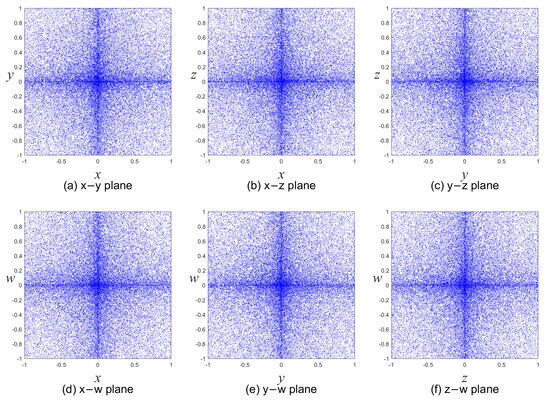
Figure 1

Journal Menu
► ▼ Journal Menu-
- Entropy Home
- Aims & Scope
- Editorial Board
- Reviewer Board
- Topical Advisory Panel
- Video Exhibition
- Instructions for Authors
- Special Issues
- Topics
- Sections & Collections
- Article Processing Charge
- Indexing & Archiving
- Editor’s Choice Articles
- Most Cited & Viewed
- Journal Statistics
- Journal History
- Journal Awards
- Society Collaborations
- Conferences
- Editorial Office
Journal Browser
► ▼ Journal Browser-
arrow_forward_ios
Forthcoming issue
arrow_forward_ios Current issue - Vol. 25 (2023)
- Vol. 24 (2022)
- Vol. 23 (2021)
- Vol. 22 (2020)
- Vol. 21 (2019)
- Vol. 20 (2018)
- Vol. 19 (2017)
- Vol. 18 (2016)
- Vol. 17 (2015)
- Vol. 16 (2014)
- Vol. 15 (2013)
- Vol. 14 (2012)
- Vol. 13 (2011)
- Vol. 12 (2010)
- Vol. 11 (2009)
- Vol. 10 (2008)
- Vol. 9 (2007)
- Vol. 8 (2006)
- Vol. 7 (2005)
- Vol. 6 (2004)
- Vol. 5 (2003)
- Vol. 4 (2002)
- Vol. 3 (2001)
- Vol. 2 (2000)
- Vol. 1 (1999)
Highly Accessed Articles
Latest Books
E-Mail Alert
News
Topics
Topic in
Entropy, Algorithms, Computation, MAKE, Energies, Materials
Artificial Intelligence and Computational Methods: Modeling, Simulations and Optimization of Complex Systems
Topic Editors: Jaroslaw Krzywanski, Yunfei Gao, Marcin Sosnowski, Karolina Grabowska, Dorian Skrobek, Ghulam Moeen Uddin, Anna Kulakowska, Anna Zylka, Bachil El FilDeadline: 20 October 2023
Topic in
Coatings, Energies, Entropy, Foundations, Nanomaterials, Symmetry, Thermo
Heat Transfer Enhancement and Applications
Topic Editors: Mikhail Sheremet, Abderrahmane BaïriDeadline: 30 October 2023
Topic in
Energies, Entropy, Photonics, Technologies, Thermo
Advances in Solar Technologies
Topic Editors: Jayanta Deb Mondol, Annamaria Buonomano, Biplab DasDeadline: 10 November 2023
Topic in
Entropy, Future Internet, Healthcare, MAKE, Sensors
Communications Challenges in Health and Well-Being
Topic Editors: Dragana Bajic, Konstantinos Katzis, Gordana GardasevicDeadline: 30 November 2023

Conferences
Special Issues
Special Issue in
Entropy
Optical Communication and Information Technology
Guest Editors: Mario Martinelli, Pierpaolo BoffiDeadline: 10 September 2023
Special Issue in
Entropy
Application of Information Theory to Compact Astrophysical Objects
Guest Editors: Ilona Bednarek, Jacek SyskaDeadline: 30 September 2023
Special Issue in
Entropy
Entropy in Data Analysis II
Guest Editors: Hamed Azami, Peng Li, Jose C. PrincipeDeadline: 15 October 2023
Special Issue in
Entropy
Non-equilibrium Phase Transitions
Guest Editors: Carlos E. Fiore, Silvio C. FerreiraDeadline: 30 October 2023
Topical Collections
Topical Collection in
Entropy
Entropy-Based Applied Cryptography and Enhanced Security for Future IT Environments
Collection Editor: Luis Javier Garcia Villalba
Topical Collection in
Entropy
Wavelets, Fractals and Information Theory
Collection Editor: Carlo Cattani
Topical Collection in
Entropy
Foundations of Statistical Mechanics
Collection Editor: Antonio M. Scarfone







